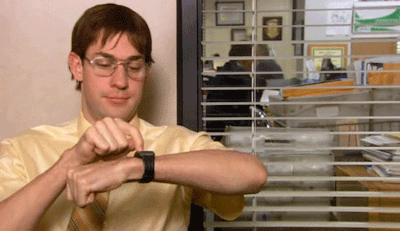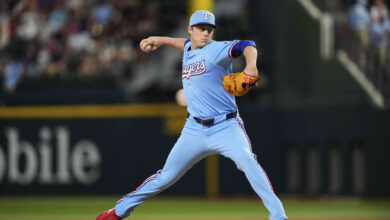
Watch This: MLB Testing New Tech to Prevent Sign Stealing
If you ain’t cheatin’, you ain’t tryin’. Or so goes the idiom widely attributed to the notorious rule-benders of NASCAR that has since become commonplace in all circles of competition. Heck, one source even credits former Cubs great Mark Grace with coining the phrase. And while I suppose there are some tangential ties to “slump-buster,” any claims to the Mayor of Wrigleyville’s responsibility are dubious at best.
Regardless of its necessity and ubiquity, MLB is working to make certain aspects of cheating that much more difficult. And wouldn’t you know it, their latest attempts to eliminate sign-stealing involve some of the very same tech the Red Sox used to crib signs from the Yankees in 2017.
According to Jesse Dougherty of the Washington Post, folks from the league office are at Nationals camp Monday to try out a “new communication device for pitchers and catchers.”
MLB is at Nationals’ camp today workshopping a new communication device for pitchers and catchers. It would allow catchers to type a pitch call (with location) into a watch that is connected to a watch the pitcher is wearing on the mound. An effort to eliminate sign-stealing.
— Jesse Dougherty (@dougherty_jesse) March 18, 2019
As Dougherty tweeted, the “new” tech would involve watches worn by both pitcher and catcher that would allow pitch calls and locations to be transmitted without giving signs. Through our extensive back-channels, CI was able to obtain exclusive video of the devices in action.

Seriously, though, I can’t be the only one who saw the tweet and immediately thought of those Casio calculator watches from the 80’s. And just like those anachronistic chronometers, this whole thing just sounds really clunky on several different levels. Aside from the obvious weirdness involved in adoption, a watch being worn behind the plate and on the mound has serious potential for breakage. And wearable tech is far from infallible under the best circumstances.
Catchers have big ol’ paws and could be dealing with pain or numbness in their fingertips at various points of the game. Even with full dexterity, there’s serious potential to fat-finger a signal and call for a curveball instead of a slider, or to ask for a low fastball when the batter is far more susceptible to high cheese.
What if someone forgets to charge the units or doesn’t have them properly synced? Or worse, what if the other team figures out how to hack the signal and then has immediate access to the signs with even less effort than would be involved in having a runner on second relaying them?
Then you’ve got the whole pace-of-play issue. For a league hellbent on shaving precious seconds from the game at every turn, it seems strange to introduce measures that could cause confusion and add time back. That appears to have been the case when beta testing was conducted at Yankees camp, at least.
Yankees tried these out last week — and some said it seemed like it would slow down the entire process. https://t.co/TmmytVDXCn
— James Wagner (@ByJamesWagner) March 18, 2019
Besides, is sign-stealing really such a scourge that efforts like this are required to curtail it? And if the problem has been exacerbated by the availability of advanced tech in dugouts, perhaps using additional tech isn’t the best form of combat. But what do I know, I’m just a keyboard jockey with a healthy disdain for pretty much every scheme Rob Manfred’s office has devised.

